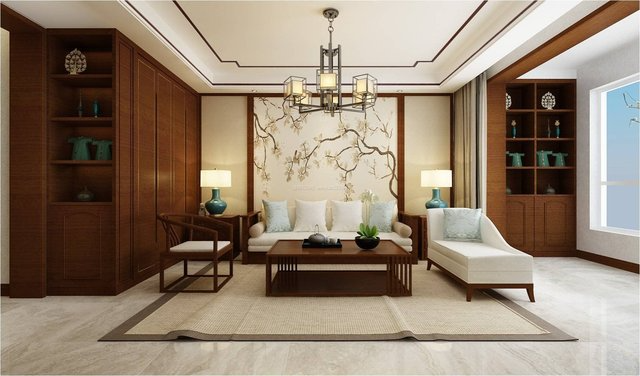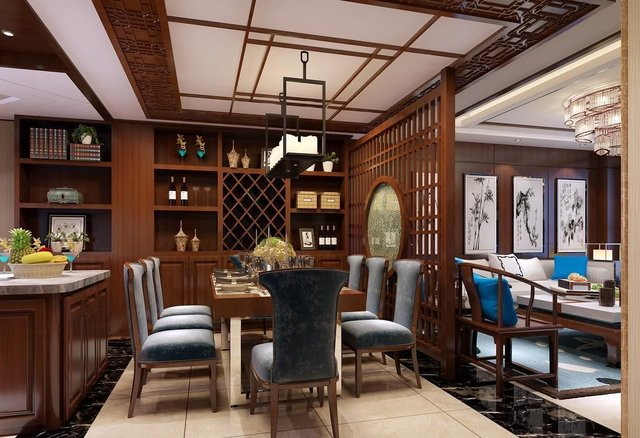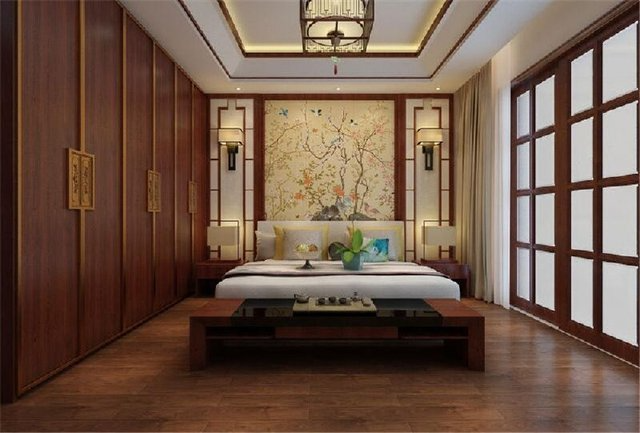What kind of furniture is healthy? A complete guide to furniture safety

Zhuang Xiaobao's Introduction: What kind of furniture is safe and healthy? Furniture pollution and safety issues have always attracted much attention. As people's quality of life improves, their demands for home design, style, and materials are becoming increasingly diverse, which also brings more and more safety hazards. So, what kind of furniture is healthy? How can we prevent furniture hazards? What are the culprits of furniture pollution and how can we prevent and control them? Understanding the following knowledge can help you live with greater peace of mind!
Furniture pollution sources
Pollution components Furniture pollution refers to the fact that newly purchased furniture generally contains special odors, such as formaldehyde, ammonia, benzene, TVOC and other volatile organic gases. After the human body absorbs them, it will cause dizziness, nausea and other uncomfortable conditions.
Sources of Formaldehyde : Generally speaking, the concentration of formaldehyde released indoors is related to the quality and condition of the furniture, as well as the frequency of ventilation. However, the most important factor is the condition of the furniture. Generally, new furniture releases about five times more formaldehyde than old furniture.
Benzene pollution is no less potent than formaldehyde. Benzene isn't found in furniture itself, but rather lurks within the materials used to make it. Benzene-related substances are highly volatile, and painted furniture quickly releases benzene, causing indoor environmental pollution.
The sources of ammonia are antifreeze, expansion agent and early strength agent in concrete, and additives and whitening agents with ammonia as the main raw material used to improve the color of furniture.
Preventive measures: Appropriately plant green plants with strong adsorption properties, such as aloe vera; use porous solid adsorbents to treat gaseous pollutants, such as activated carbon; in addition, the air can also be purified through electrical appliances such as air purifiers.
Environmentally friendly furniture
Environmentally friendly furniture requires that the furniture itself is pollution-free and non-toxic; it has high artistic connotations and aesthetic functions, echoes the interior design, and creates a harmonious and beautiful home and office environment; it is easy to recycle, process, and reuse, and will not cause pollution to the environment.
Types of environmentally friendly furniture include wooden furniture made mainly of logs, without any paint or artificial decorative materials covering or edge banding; carpets and floors made of natural materials, carpets woven from pure wool or made of rags, wood and bamboo floors, etc.; rattan and bamboo furniture full of natural flavor.
Buying tips : Look at the material and find the logo. Any furniture with the national "green product" logo can be purchased and used with confidence; choose furniture without irritating odor.
Based on formaldehyde emission limits, wood panels are categorized into three levels: E2 ≤ 5.0 mg/L, E1 ≤ 1.5 mg/L, and E0 ≤ 0.5 mg/L. In China, E2-level panels are sufficient; E2, E1, and E0 are all considered environmentally friendly. There are many different types of environmentally friendly panels, each with different usage methods and environments. Therefore, please be cautious when purchasing.

Furniture safety hazards
Furniture tipping over: If the furniture in the home is over 600mm high and is not firmly fixed, active children may open the cabinet doors or drawers and pull or press down on them, which may cause the furniture to tip over and cause injuries.
Broken glass There are many places in the home where glass is used, such as cabinet doors, sliding doors, bay windows or floor-to-ceiling windows. If children accidentally break the glass while playing, the sharp broken glass can cause serious injuries to the children.
Crib pendants: Be sure to tie the crib bell and hanging mosquito net on the crib properly. When the baby can stand up by holding the edge of the bed, he or she may be easily entangled in the hanging ropes when grabbing toys, which may cause danger. Tie the toys where the baby cannot reach them.
Bumps on table corners Pay attention to the corners of all furniture in the home. The corners of tables and cabinets should be covered with child-proof corner covers, especially the corners of glass tables, which are more dangerous. Make sure there are no sharp points in the home to prevent children from being bumped or bruised.
Improvement suggestions: For furniture, special attention should be paid to ensuring that it is properly fixed and can withstand a certain amount of tension, and there is no risk of tipping over; in addition, for furniture with corners or glass, attention should be paid to the protection of the corners and glass, and protective covers, films, etc. should be used to prevent them.
Children's furniture selection
Security
Furniture with sharp corners can easily hurt children, so it is best to choose furniture with rounded blunt corners; furniture for closed spaces, such as wardrobes, should have vents for good ventilation; for children, places with glass pose hidden dangers, so it is best not to choose furniture with glass.
Age group selection
Babies, with their delicate hands and feet, need comfortable and safe cribs. Children aged 3-6 are active and lively, so choose furniture with cheerful colors, fun features, and storage functions. Children aged 7 and above need multifunctional furniture, such as integrated desks and cribs.
Quality and safety identification
When choosing environmentally friendly children's furniture, you should mainly judge it from three aspects: material, color, and appearance. It is best to choose furniture for your children made of solid wood; the color should not be too bright, the surface should be flat and smooth, there should be no irritating odor, and it should be safe and reliable.
Note: All dangerous external corners below 160cm from the ground must be rounded; glass cannot be used and there must be no dangerous protrusions; furniture that exceeds a certain height and thickness must be fixed to the wall to prevent children from climbing and causing the furniture to fall and injure the children.
Home moisture-proofing
Wall mold The first sign of moisture on the wall is the condensation of water droplets on the surface. If not handled in time, the wall may become moldy and fall off. At this time, you can wipe off the mold spots and spray alcohol for disinfection. However, when a large area is affected by moisture, you can only scrape the wall and repaint it.
It is very important to lay a good foundation for moisture- proofing wooden floors . It is best to choose a high-density floor substrate; the wear-resistant layer and decorative paper outside the board can also isolate moisture well; in addition, open the windows for ventilation as soon as possible after the floor is cleaned to ensure the dryness of the floor.
To prevent moisture from forming on the ceiling, first allow the damp wall to dry completely. Apply a layer of water-repellent slurry mixed with cement to prevent moisture. Next, fill any pits and roughness with plaster putty. Apply the putty evenly. Once dry, sand the wall smooth. Repeat this process twice and clean thoroughly. Apply the primer twice to the dry, clean wall using a paint roller (or spray).
Moisture-Proof Furniture: Wooden furniture requires frequent ventilation to allow the furniture to adjust naturally (except on rainy days). During daily maintenance, avoid using a damp cloth to prevent moisture from seeping into the furniture and causing mold. If the furniture does show signs of mold, wipe it with a dry cloth dipped in a specialized wood furniture cleaner.
Household decontamination
Air pollution: Indoor air pollutants primarily come from decoration materials and furniture, with formaldehyde, benzene, and ammonia being common. Air purifiers, deodorizers, formaldehyde traps, potted plants, activated carbon, and other methods can be used to eliminate these harmful substances.
Light pollution can be categorized as white light pollution, artificial daylight, and color light pollution. These pollution primarily comes from indoor and outdoor lighting and the color of decorative materials. Therefore, avoid overly bright colors in your home decor; choose lighting with the right hue; and ensure curtains have good light-blocking properties.
Electromagnetic radiation pollution comes from various electrical appliances, but most household appliances do not pose a health hazard. Avoid placing electrical appliances together or frequently using them together. Avoid operating various household appliances, office equipment, and mobile phones for extended periods of time.
Noise pollution: Generally, sounds reaching 80 decibels or above are considered noise. To combat noise pollution, it is important to consider soundproofing materials during renovations, including soundproof doors and windows, sound-absorbing curtains, and soundproof wall materials. This multi-pronged approach can help reduce noise pollution.

Indoor air purification
Activated carbon adsorption
This method utilizes the high surface area of activated carbon or carbon fiber to chemically adsorb harmful chemicals in the air. It's simple to use and can quickly absorb a certain amount of pollutants without causing secondary pollution. However, it has no effect on microorganisms, and adsorbed pollutants may become dissociated as temperature and wind speed rise to a certain level.
Air Freshener
Releases a high concentration of fragrance into the air, reducing the olfactory sensitivity to other odors. This can mask odors, effectively addressing air odor issues in a short period of time and on a small scale. However, it is inherently low in toxicity and only masks odors; it has no effect on pollutants or bacteria.
Negative ion purification
Eliminating formaldehyde through chemical reactions can, to some extent, reduce formaldehyde pollution in indoor air. It's relatively simple to use and can aggregate and settle particulate pollutants, contributing to a certain degree of air purification. However, the process is slow, the disinfection is incomplete, it's largely ineffective against chemical pollutants, and it easily accumulates dust.
air purifier
Negative ions are released to filter out particles, suspended matter, and dust passing through the machine's inlet and outlet. They effectively filter smoke and fine dust particles in a small area and for a short period of time. Newer air purifiers are somewhat effective against toxic and harmful gases. However, the filter needs to be replaced frequently. They consume energy and require operation to be effective.
Plant purification
It absorbs dust, absorbs harmful gases in the air during metabolism, and synthesizes other substances in the body to keep the air fresh, green, environmentally friendly and healthy. However, it only plays an auxiliary role and the effect is not obvious. It is not good for people who are allergic to pollen and flowers, as well as patients with respiratory diseases.
Diatom mud adsorption
The surface of diatomaceous earth particles has countless tiny pores, which provide strong physical adsorption and ion exchange properties. They absorb free formaldehyde, benzene, radioactive substances, smoking, and odors from household waste. However, this effectiveness decreases with age. Saturation leads to the secondary release of harmful substances as the temperature rises.